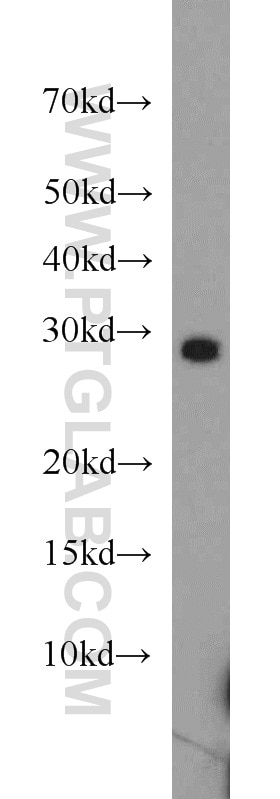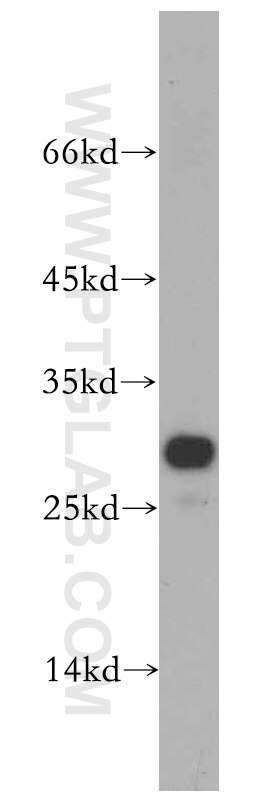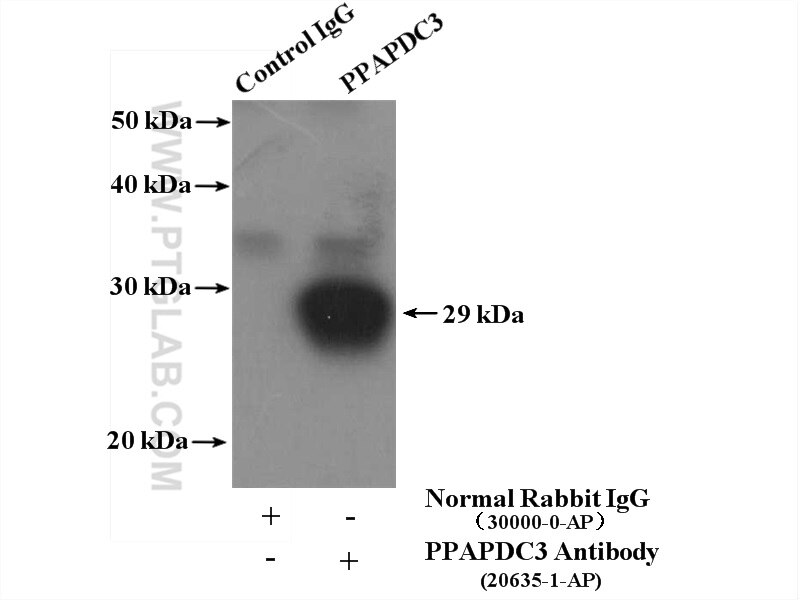PPAPDC3 Polyclonal antibody
PPAPDC3 Polyclonal Antibody for WB, IP, ELISA
Host / Isotype
Rabbit / IgG
Reactivity
human, mouse, rat
Applications
WB, IP, ELISA
Conjugate
Unconjugated
Cat no : 20635-1-AP
Synonyms
Validation Data Gallery
Tested Applications
| Positive WB detected in | mouse skeletal muscle tissue |
| Positive IP detected in | mouse skeletal muscle tissue |
Recommended dilution
| Application | Dilution |
|---|---|
| Western Blot (WB) | WB : 1:500-1:1000 |
| Immunoprecipitation (IP) | IP : 0.5-4.0 ug for 1.0-3.0 mg of total protein lysate |
| It is recommended that this reagent should be titrated in each testing system to obtain optimal results. | |
| Sample-dependent, Check data in validation data gallery. | |
Published Applications
| WB | See 3 publications below |
Product Information
The immunogen of 20635-1-AP is PPAPDC3 Fusion Protein expressed in E. coli.
| Tested Reactivity | human, mouse, rat |
| Cited Reactivity | human |
| Host / Isotype | Rabbit / IgG |
| Class | Polyclonal |
| Type | Antibody |
| Immunogen | PPAPDC3 fusion protein Ag14676 |
| Full Name | phosphatidic acid phosphatase type 2 domain containing 3 |
| Calculated Molecular Weight | 271 aa, 29 kDa |
| Observed Molecular Weight | 29 kDa |
| GenBank Accession Number | BC006362 |
| Gene Symbol | PPAPDC3 |
| Gene ID (NCBI) | 84814 |
| RRID | AB_10696180 |
| Conjugate | Unconjugated |
| Form | Liquid |
| Purification Method | Antigen affinity purification |
| Storage Buffer | PBS with 0.02% sodium azide and 50% glycerol pH 7.3. |
| Storage Conditions | Store at -20°C. Stable for one year after shipment. Aliquoting is unnecessary for -20oC storage. 20ul sizes contain 0.1% BSA. |
Background Information
PPAPDC3(Phosphatidic acid phosphatase type 2 domain-containing protein 3) is also named as C9orf67 and belongs to the PA-phosphatase related phosphoesterase family. It plays a role as negative regulator of myoblast differentiation, in part through effects on MTOR signaling.
Protocols
| Product Specific Protocols | |
|---|---|
| WB protocol for PPAPDC3 antibody 20635-1-AP | Download protocol |
| IP protocol for PPAPDC3 antibody 20635-1-AP | Download protocol |
| Standard Protocols | |
|---|---|
| Click here to view our Standard Protocols |
Publications
| Species | Application | Title |
|---|---|---|
Genome Biol Specific nuclear envelope transmembrane proteins can promote the location of chromosomes to and from the nuclear periphery. | ||
Cells Lamin A/C Assembly Defects in LMNA-Congenital Muscular Dystrophy Is Responsible for the Increased Severity of the Disease Compared with Emery-Dreifuss Muscular Dystrophy. | ||
Front Cell Dev Biol Nuclear envelope transmembrane proteins involved in genome organization are misregulated in myotonic dystrophy type 1 muscle |




